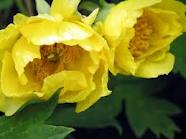Pinguicula
Pot Cultivation
Grow Butterworts in full sun or partial shade in whole fiber sphagnum moss or equal parts of peat moss and coarse vermiculite or sharp sand. Their soil needs to be moist. When planting in the bog garden, set on low mounds to prevent overwatering.Propagation
Seeds will be ripe a few weeks after the blossoms die. When the seedpods turn brown, break them open and release the seeds. They may be stored in paper envelopes in airtight containers in the refrigerator. Sprinkle the seeds on the surface of moistened peat moss, milled sphagnum moss, or one part peat moss and one part vermiculite that has been watered with water mixed with fungicide. Set the containers in a shallow tray of water. Watering from below prevents the seeds from moving around. Keep out of direct sunlight and maintain a humid atmosphere by covering with glass or plastic wrap. Make sure to watch for fungal infections. |
 |
P. alpina |
P. lutea |
VARIETIES
- Hardy -
P. alpina;
P. grandiflora;
P. vulgaris. - Tender -
P. elatior;
P. lutea;
P. Bakeriana.




